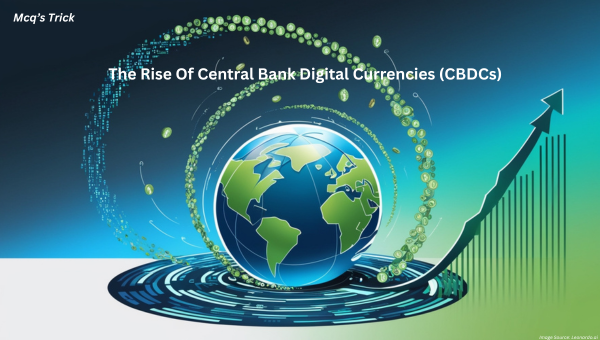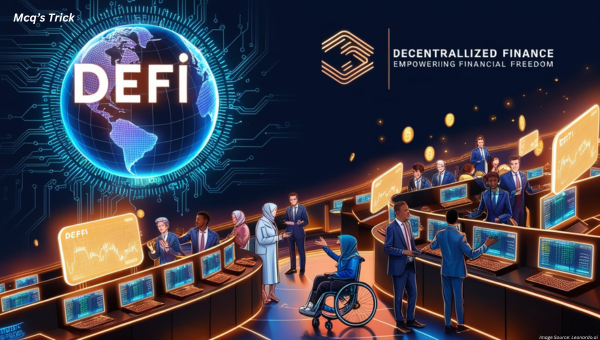The rise of digital currencies, especially those like Bitcoin and Ethereum, has already started to reshape the global financial landscapes. Going into 2025, the road for digital currencies promises change, including new technologies, regulations, and economic paradigms. The future is full of great potential, but it will also have complexity- ranging from the development of central bank digital currencies (CBDCs), blockchain innovations, and integration into traditional banking systems. This article will delve into the key trends shaping the future of digital currencies and reveal to readers what they can expect in 2025.
- Digital currencies are changing global finance.
- CBDCs are gaining momentum.
- Blockchain innovations will unlock new opportunities.
- The integration of digital currencies with traditional finance is accelerating.
Table Of Contents
The Rise Of Central Bank Digital Currencies (CBDCs)
By 2025, Central Bank Digital Currencies are expected to be a significant part of the ecosystem of digital currencies. Governments and central banks around the world are planning to issue their respective digital currencies in order to have maximum control over monetary policies with reduced transaction costs and efficient cross-border payments. With China already piloting the digital yuan and the European Central Bank researching the digital euro, CBDCs are taking the lead as an alternative to cryptocurrencies.

- CBDCs are considered a government-backed alternative to decentralized cryptocurrencies.
- Leaders China stands out with its digital yuan pilot program.
- CBDCs could simplify monetary policy and cross-border transactions.
- Many central banks are actively researching and developing CBDC projects.
Integration With Traditional Finance
Integration between digital currencies and traditional financial systems will also strengthen in the future of 2025. Financial institutions such as banks and payment processors embrace blockchain technology and the use of digital currency to enhance their operations. Digital assets are getting more acceptance for investment purposes, as well as more banks offering cryptocurrency services. This integration will likely make traditional and digital systems coexist more smoothly, making more mainstream digital currencies.
- Traditional financial institutions are embracing blockchain and digital currencies
- More banks are offering crypto services to their customers.
- Digital currencies will be included in the mainstream financial system
- The traditional financial infrastructure is going to evolve to absorb digital assets.
Regulatory Landscape
The popularity of the digital currency will continue and so will the regulatory structures. Governments around the world are working to create laws that will govern digital assets, especially cryptocurrencies, in order to protect investors, prevent illegal activities such as money laundering, and secure financial systems. More countries will have comprehensive regulations on issues such as crypto taxation, anti-money laundering protocols, among others, making the digital currency market more secure and transparent by 2025.
- More regulations for digital currencies will be created by governments.
- AML and taxation rules will adapt.
- Regulatory clarity will lessen ambiguities in the crypto economy.
- Increased oversight seeks to make the digital assets environment safer.

Blockchain Innovations And Scalability
The blockchain technology that supports most of the digital currencies will continue to advance and address the current limitations of the system, including scalability and transaction speed. Blockchain platforms will become more efficient by handling higher volumes of transactions by 2025 and will reduce energy consumption. New blockchain protocols and consensus mechanisms, such as Proof-of-Stake (PoS), will increase scalability while making decentralized networks more secure and sustainable.
- Blockchain technology will become more scalable and efficient.
- New consensus mechanisms such as PoS will increase speed.
- Blockchain’s innovation will answer questions like energy consumption.
- Improvements in scalability will allow digital currencies to meet higher demand.
Role Of Decentralized Finance (DeFi)
Decentralized finance, or DeFi, will likely become an increasingly important player in the digital currency landscape by 2025. DeFi platforms attempt to offer financial services like lending, borrowing, and trading without the need for traditional intermediaries such as banks. As DeFi technologies mature, we will see more adoption of dApps and smart contracts, giving users greater control over their financial transactions and potentially democratizing finance on a global scale.
- DeFi networks would provide more financial services without intermediaries.
- Smart contracts and dApps will be allowed to become more common.
- Decentralization will empower users into managing their own finances.
- DeFi may disrupt traditional financial systems by offering global access to finance.

Improved Security Measures
More security in the future of digital currencies is what the world will see. With more prominence of digital currencies, there is also the risk of cyberattacks, hacks, and frauds. By 2025, we will be able to see more advanced security in digital currency platforms such as multi-signature wallets, advanced encryption protocols, and a robust cybersecurity approach. It will help safeguard digital assets and give peace of mind to users, investors, and institutions.
- Improved security measures will protect digital currencies.
- Multi-signature wallets and encrypted protocols will ensure more secure wallets.
- Cybersecurity technologies will help in minimizing frauds and hacking possibilities.
- The digital currencies will take robust measures to ensure the user funds.
Digital Currencies In International Trade And Remittances
Digital currencies may in the future integrate more into global trades and remittances by 2025. Cryptocurrencies and CBDCs show promise in conducting cross border transactions that will be even faster, cheaper, and more efficient compared to their traditional banking system counterparts. Particularly in developing countries, high-cost remittance would be significantly challenged by digital currencies that might reduce the said costs in addition to sending transfers faster. Thereby, financial systems for the whole world become more and more inclusive.
- Digital currencies will facilitate faster and cheaper cross-border transactions.
- Remittances will become more affordable through digital currencies.
- Cryptocurrencies and CBDCs will help simplify global trade.
- Digital currencies could drive financial inclusion in underserved regions.
The Future Of NFTs And Digital Assets
The NFTs would continue to transform industries as diverse as art and entertainment, gaming, and real estate. NFTs could be more widely integrated with digital currencies in 2025, opening new investment opportunities and ways of representing ownership of unique assets. This would likely create new digital marketplaces and platforms where people can buy, sell, and trade digital assets using cryptocurrencies or CBDCs, thus making the digital economy more diversified and accessible.
- NFTs will be fully integrated into digital currencies.
- New platforms will appear for the buying and trading of digital assets
- NFTs will expand further in fields such as art, gaming, and even real estate.
- Digital currencies will provide fuel to further boost the NFT ecosystem.
Conclusion
The future of 2025 digital currencies is well in their future, transforming trends will change the current face of the global financial landscape. From the rise of CBDCs to the integration of decentralized finance and blockchain innovations, the evolution of digital currencies will continue to offer new opportunities and challenges. As digital currencies become more mainstream, they will drive efficiency, security, and financial inclusion while also disrupting traditional financial systems. In conclusion, the next few years will be pivotal in determining how digital currencies will impact economies, industries, and societies worldwide.
FAQ’s
What is the future of cryptocurrency in 2025?
By 2025, cryptocurrency is expected to gain more mainstream adoption, supported by improved regulations, enhanced security, and integration into traditional financial systems. Blockchain technology will evolve, driving efficiency and scalability in the crypto market.
What do you think is the future of digital currency?
Digital currencies will play a crucial role in global finance by 2025, with central bank digital currencies (CBDCs) becoming more widespread. Blockchain innovations, DeFi, and digital asset integration will transform financial services, offering faster, cheaper transactions globally.